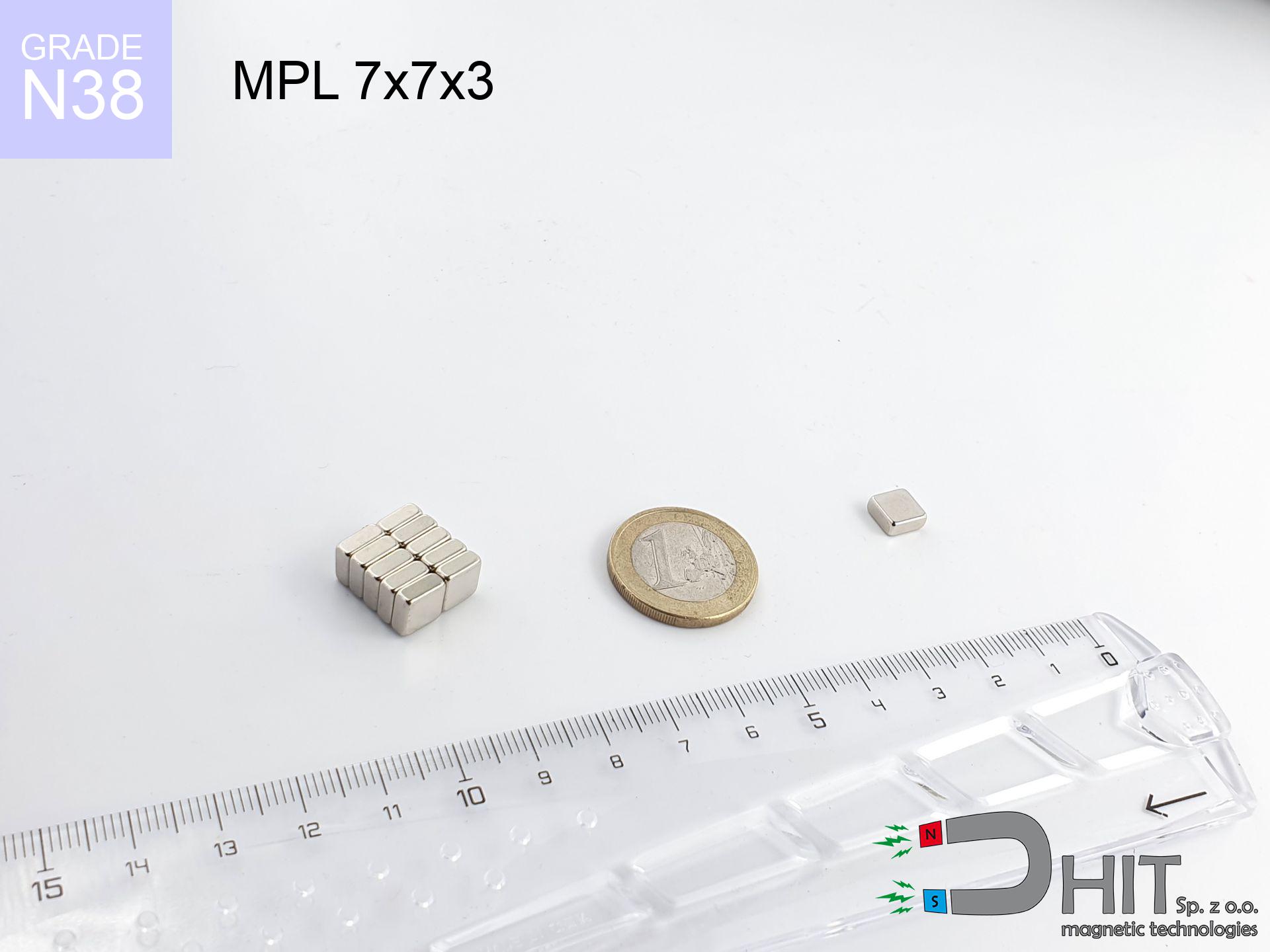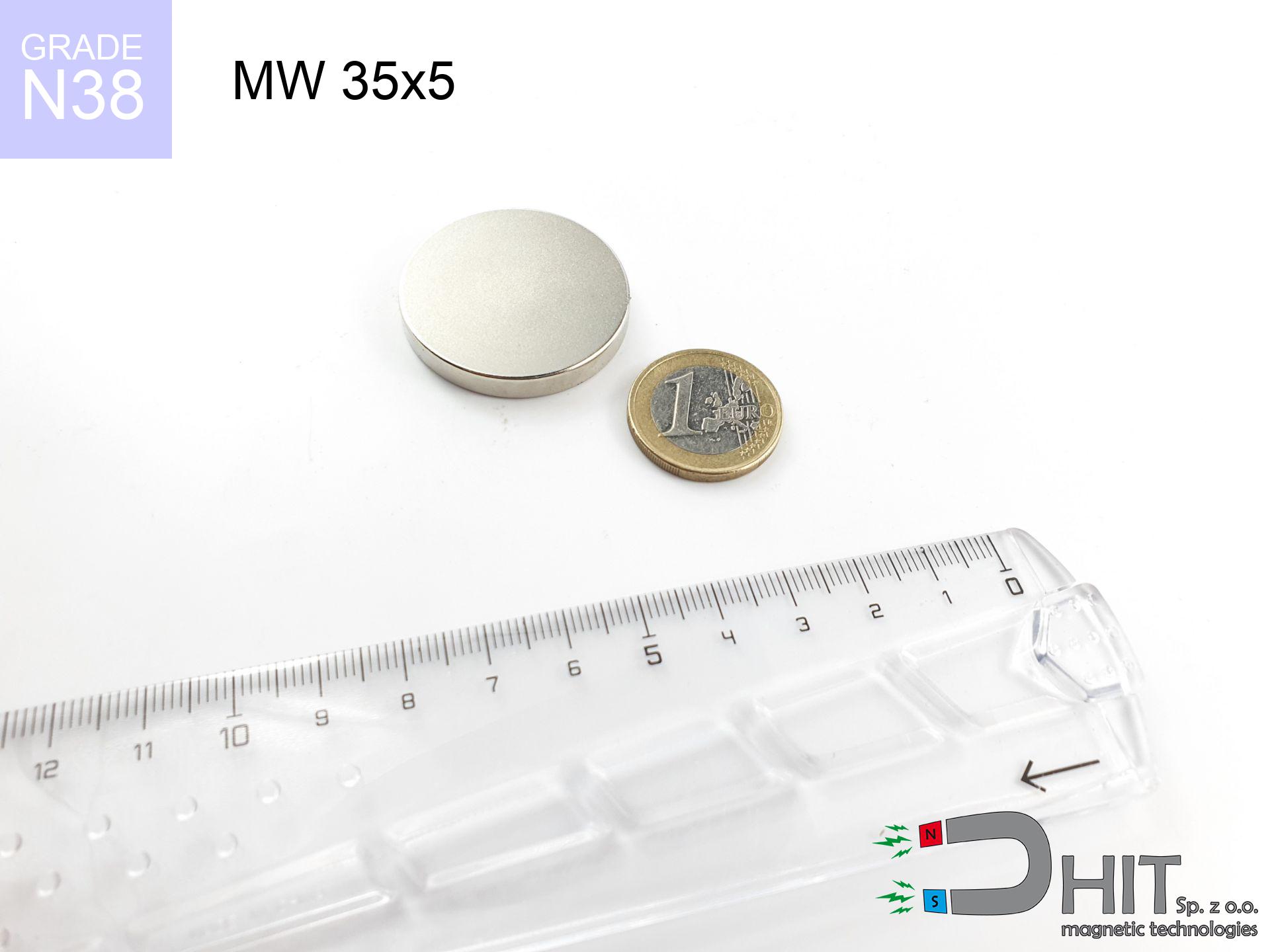BM 850x180x70 [4x M8]
magnetic beam
catalog number 090224
GTIN: 5906301812593
length
850
mm [±0,1 mm]
width
180
mm [±0,1 mm]
height
70
mm [±0,1 mm]
catalog number 090224
GTIN: 5906301812593
length
850 mm [±0,1 mm]
width
180 mm [±0,1 mm]
height
70 mm [±0,1 mm]
7729.93 ZŁ gross price (including VAT) / pcs +
6284.50 ZŁ net price + 23% VAT / pcs
bulk discounts:
need more quantity?Want to talk about magnets?
Call us tel: +48 888 99 98 98 or contact us through contact form on the contact page. You can check the power as well as the appearance of neodymium magnets in our force calculator power calculator
Orders placed by 2:00 PM will be shipped on the same business day.
Specification: magnetic beam 850x180x70 [4x M8]
Compilation of suggested goods
Advantages as well as disadvantages of neodymium magnets NdFeB.
In addition to immense strength, neodymium magnets have the following advantages:
- They do not lose power over time. After 10 years, their power decreases by only ~1% (theoretically),
- They are extremely resistant to demagnetization by external magnetic sources,
- In other words, thanks to the shiny nickel, gold, or silver finish, the element gains an aesthetic appearance,
- They have exceptionally high magnetic induction on the surface of the magnet,
- Thanks to their high temperature resistance, they can operate (depending on the form) even at temperatures up to 230°C and above...
- The ability for precise shaping and customization to specific needs – neodymium magnets can be produced in a wide range of shapes and sizes, which enhances their versatility in applications.
- Key role in modern technologies – are utilized in hard drives, electric drive mechanisms, medical apparatus and very advanced devices.
Disadvantages of neodymium magnets:
- They are prone to breaking as they are extremely fragile when subjected to a powerful impact. If the magnets are exposed to impacts, it is suggested using magnets in a steel housing. The steel housing in the form of a holder protects the magnet from impacts and also increases its overall strength,
- They lose power at high temperatures. Most neodymium magnets experience permanent loss of strength when heated above 80°C (depending on the form and height). However, we also offer special magnets with high temperature resistance, up to 230°C,
- Due to their susceptibility to corrosion in a humid environment, we suggest using waterproof magnets made of rubber, plastic, or other moisture-resistant materials when using them outdoors,
- The use of a cover or a magnetic holder is recommended due to the limited possibilities of manufacturing threads or complex shapes in the magnet
- Potential hazard associated with microscopic parts of magnets are risky, if swallowed, which is crucial in the context of child safety. Additionally, miniscule components of these devices are able to hinder the diagnostic process when they are in the body.
Handle with Care: Neodymium Magnets
Keep neodymium magnets away from youngest children.
Neodymium magnets are not toys. You cannot allow them to become toys for children. Small magnets pose a serious choking hazard or can attract to each other in the intestines. In such cases, the only solution is to undergo surgery to remove the magnets, and otherwise, it can even lead to death.
Dust and powder from neodymium magnets are flammable.
Do not attempt to drill into neodymium magnets. Mechanical processing is also not recommended. If the magnet is crushed into fine powder or dust, it becomes highly flammable.
Neodymium magnets can demagnetize at high temperatures.
Under specific conditions, Neodymium magnets can lose their magnetism when subjected to high temperatures.
The magnet is coated with nickel - be careful if you have an allergy.
Studies show a small percentage of people have allergies to certain metals, including nickel. An allergic reaction often manifests as skin redness and rash. If you have a nickel allergy, you can try wearing gloves or simply avoid direct contact with nickel-plated neodymium magnets.
Never bring neodymium magnets close to a phone and GPS.
Intense magnetic fields generated by neodymium magnets interfere with compasses and magnetometers used in navigation, as well as internal compasses of smartphones and GPS devices.
Neodymium magnetic are extremely fragile, resulting in their cracking.
Neodymium magnetic are highly delicate, and by joining them in an uncontrolled manner, they will break. Neodymium magnets are made of metal and coated with a shiny nickel surface, but they are not as hard as steel. At the moment of collision between the magnets, sharp metal fragments can be dispersed in different directions.
It is crucial not to allow the magnets to pinch together uncontrollably or place your fingers in their path as they attract to each other.
Magnets attract each other within a distance of several to around 10 cm from each other. Don't put your fingers in the path of magnet attraction, as a significant injury may occur. Depending on how massive the neodymium magnets are, they can lead to a cut or alternatively a fracture.
Do not place neodymium magnets near a computer HDD, TV, and wallet.
Magnetic fields generated by neodymium magnets can damage magnetic storage media such as floppy disks, credit cards, magnetic ID cards, cassette tapes, video tapes, or other similar devices. They can also damage televisions, VCRs, computer monitors, and CRT displays. Avoid placing neodymium magnets in close proximity to electronic devices.
Neodymium magnets are over 10 times stronger than ferrite magnets (the ones in speakers), and their strength can surprise you.
Please review the information on how to handle neodymium magnets and avoid significant harm to your body, as well as prevent unintentional disruption to the magnets.
Neodymium magnets should not be near people with pacemakers.
Neodymium magnets generate very strong magnetic fields that can interfere with the operation of a pacemaker. This is because many of these devices are equipped with a function that deactivates the device in a magnetic field.
Please see the article - What danger lies in neodymium magnets? You will learn how to handle them properly.

![BM 850x180x70 [4x M8] BM 850x180x70 [4x M8]](https://cdn3.dhit.pl/graphics/products/bm-850x180x70-4x-m8-mep.jpg)





